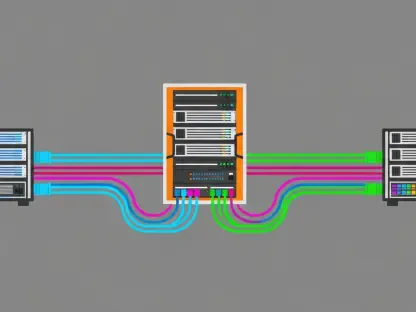In today’s business landscape, sustainability has become a critical focus for organizations aiming to enhance their operations and outcomes. However, not all companies are fully prepared to leverage sustainability effectively. This presents a unique opportunity for Chief Information Officers (CIOs) to lead the charge in promoting sustainability through the strategic use of technology and collaboration. With their command over technology and data, CIOs are ideally positioned to drive collaborative decision-making processes that are informed by precise data. The integration of a sustainability mindset into the technological framework of an organization ensures more efficient and impactful efforts toward achieving long-term environmental and business benefits.
The Role of CIOs in Promoting Sustainability
Chief Information Officers (CIOs) are uniquely positioned to drive sustainability initiatives within their organizations. Leveraging their expertise in technology and data management, CIOs can lead collaborative decision-making processes that are informed by precise data. Accurate and comprehensive data collection and analysis are critical for identifying areas of improvement and measuring the success of sustainability initiatives. For example, apparel-maker Vuori streamlines waste reduction efforts, manages its carbon footprint, and handles raw materials more efficiently by utilizing data. Similarly, Choice Hotels leverages utility-provided data to identify and address sustainability issues such as leaking swimming pools. These examples underscore the importance of data in driving sustainability efforts and highlight how CIOs can bring significant environmental benefits by unveiling overlooked inefficiencies.
In addition to their role in data management, CIOs can also promote a sustainability-centric mindset within their organizations. By fostering a culture that prioritizes sustainability, CIOs can ensure that sustainability goals are met efficiently and effectively. This involves initiating discussions with company leadership to underscore how technology influences sustainability goals and presenting data in a clear and comprehensible manner to gain widespread buy-in. Effective communication is paramount, particularly when addressing non-technical stakeholders. By making sustainability a central tenet of the organization’s strategy, CIOs can drive more nuanced and collaborative approaches to achieving sustainability objectives.
Collaborating with Technological Allies
CIOs can further sustainability efforts by collaborating with technological allies who support sustainability. The average enterprise today employs a myriad of Software-as-a-Service (SaaS) applications, each with varying commitments to sustainability. These external partners, ranging from vendors to logistics and waste removal service providers, significantly impact an organization’s sustainability footprint. Selecting technology partners who address sustainability needs is crucial for ensuring that the organization’s sustainability goals are met. Industry leaders like Sam Scoten, CEO at CheckSammy, emphasize the importance of evaluating partners through the lens of data. This includes benchmarking current diversion rates and quantifying their impact. Such data-centric evaluation and reporting are essential for measuring success and communicating progress both internally and externally.
Collaborating with technological allies also involves ensuring that these partners share the organization’s commitment to sustainability. This includes assessing the environmental impact of the technology that partners use and selecting partners who bring innovative solutions to the table. By fostering strong partnerships with tech allies, CIOs can ensure that their organizations are equipped with the best tools and technologies to achieve their sustainability goals. This collaborative approach not only drives more effective sustainability initiatives but also fosters a culture of innovation and continuous improvement within the organization.
Focusing on Key Areas for Sustainability
To make sustainability central to their organizations, CIOs should focus on three critical areas: achieving net zero through green software practices, building trust via robust and transparent systems, and integrating governance so that Environmental, Social, and Governance (ESG) becomes a focal point of technology implementation. Green software practices that cut energy consumption are vital for achieving net zero, ensuring that the organization’s energy usage is minimized while maintaining optimal performance. Building trust involves creating systems that are transparent and accessible, ensuring stakeholders have confidence in the organization’s sustainability efforts.
Integrating governance ensures that ESG considerations are embedded in all technology-related decisions, promoting a holistic approach to sustainability. This involves developing systems and processes that prioritize ESG factors, ensuring that sustainability is considered at every step of the decision-making process. By focusing on these key areas, CIOs can create a robust framework for sustainability that drives long-term environmental and business benefits. This comprehensive strategy positions CIOs as pivotal agents of change, ensuring that their organizations are well-equipped to meet their sustainability goals.
Communicating and Collaborating for Success
Effective communication is paramount for promoting sustainability initiatives. CIOs must initiate discussions with company leadership to underscore how technology influences sustainability goals. Presenting data in a clear and comprehensible manner is crucial for gaining widespread buy-in and promoting a sustainability-first approach across the organization. Breaking down collaborative barriers is also essential; organizational silos and a dispersed tech stack can hinder progress despite the best intentions. CIOs play a vital role in fostering inter-departmental collaboration by encouraging a unified tech stack. Securing buy-in from various stakeholders for tech changes that impact collaboration and sustainability is key to guiding the organizational culture toward more unified and sustainable practices.
Critical to successful collaboration is the ability of CIOs to present a compelling case for sustainability efforts. By illustrating the tangible benefits of these initiatives, such as cost savings, improved efficiency, and enhanced corporate reputation, CIOs can gain support from stakeholders across the organization. Furthermore, CIOs must also focus on creating an environment that encourages continuous improvement and innovation. This involves promoting a culture that values sustainability and recognizes the importance of ongoing collaboration and data-driven decision-making. By fostering a collaborative and forward-thinking organizational culture, CIOs can drive more effective and impactful sustainability initiatives.
Creating a Sustainability Mindset
In today’s business environment, sustainability has emerged as a pivotal focus for companies aiming to improve their operations and outcomes. However, many organizations are not fully prepared to utilize sustainability to its fullest potential. This gap creates a significant opportunity for Chief Information Officers (CIOs) to take the lead in advancing sustainability through strategic technology utilization and collaboration. With their expertise in technology and data management, CIOs are uniquely positioned to spearhead collaborative decision-making processes that are informed by accurate and timely data. By embedding a sustainability mindset into the organization’s technological framework, CIOs can ensure that sustainability efforts are more efficient and have a greater impact. This approach not only contributes to better environmental practices but also enhances business benefits in the long run. Therefore, integrating sustainable practices with technological innovation becomes essential for achieving enduring success and maintaining a competitive edge in the modern marketplace.









